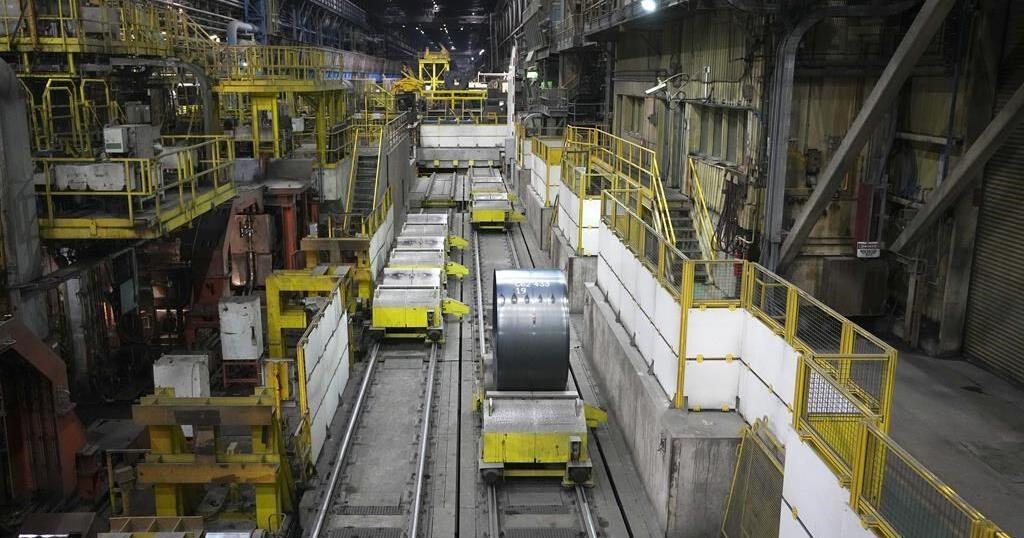Sunrise lights up the towers of the downtown Calgary skyline on Monday, December 16, 2019. Gavin Young/Postmedia
Here’s a small pick-me-up heading into a new year — two banks are projecting modest economic growth returning to Alberta in 2020 after a lethargic performance this year.
The improved outlook comes as oil prices have broken through US$60 a barrel in recent days, their highest point in three months.
TD Economics released a report this week forecasting Alberta’s gross domestic product will expand by 1.8 per cent next year, more than double the tepid rate over the past 12 months.
Similarly, a new RBC outlook projects the provincial economy will increase by 1.7 per cent in 2020 after “puny” growth this year.
“A good part of it is the fact 2019 was so sluggish. It’s a little bit of a comeback story,” RBC senior economist Robert Hogue said in an interview.
“By no means are we saying Alberta is out of the woods, but I think (there) will be more incremental improvements.”
There are still plenty of reasons to be cautious, however. The latest employment report saw 18,200 fewer jobs in November and the unemployment rate jumped up to 7.2 per cent.
Investment levels remain low, retail spending is down from a year earlier and drilling activity is off from 2018 levels.
But there have been recent improvements in areas such as energy prices and the outlook for global trade in 2020. While some local businesses have been cutting staff, other firms — such as in the technology area — are thriving and hiring.
Benevity, a Calgary-based firm that provides clients around the world with employee engagement software that facilitates giving and volunteering, is expanding quickly and will exit the year with about 650 employees.
“We continue to be quite bullish on our prospects,” CEO Bryan de Lottinville said Thursday.
“For us, a lot of the challenge is hiring people. I think we hired 240 people this year and are looking for probably another 175 or so next year.”

Bryan de Lottinville, president and CEO of Benevity, in the firm’s Calgary office.
Ted Rhodes /
Calgary Herald
In its economic outlook, TD said the province’s steps to ease government-mandated oil production quotas, “alongside a modest rebound in investment, are expected to underpin growth” next year.
As well, oil prices are headed in the right direction for the province.
Since OPEC and its partners decided earlier this month to deepen production cuts, crude prices have increased, with West Texas Intermediate crude for January delivery closing Thursday above US$61 a barrel on the New York Mercantile Exchange.
TD expects benchmark U.S. oil prices will keep trading in the range of $55 to $60 a barrel next year.
While the jobless rate remains high and employment gains will be modest in Alberta — at just 0.7 per cent next year, according to TD — some bright spots exist.
The construction of two massive petrochemical complexes in Alberta’s Industrial Heartland area is continuing. Housing starts are “gradually turning the corner, with modest gains in sales and prices anticipated” over the next few years, the report states.
“2019 was pretty lacklustre and we’ve seen that in a lot of indicators. Our 2020 forecast calls for a modest rebound,” TD economist Omar Abdelrahman said in an interview Thursday.
For its part, RBC predicts energy, manufacturing and construction, as well as the labour market, will improve in 2020.
Incremental gains in pipeline take-away capacity should help ease the transportation bottlenecks and see capital investment begin to pick up.
“Alberta’s recovery has been frustratingly slow, but 2020 promises to kick things into a higher gear,” the RBC forecast states.
The key test for Alberta in the coming year will be on the investment and jobs fronts.
ATB Financial is forecasting only 0.9 per cent economic growth for next year. It assumes worries about when additional pipeline capacity is built will act as a constraint, keeping investment levels soft.
Yet, as ATB economists pointed out Thursday in a blog, there are some signs headway is being made in the economy.
Progress continues on the Line 3 replacement project in the U.S. and the Trans Mountain pipeline expansion, OPEC cuts mean “the threat of another global oil glut is being held in check, at least for now,” while fears of a global recession and trade war are diminishing.
“There are some positive stories out there,” Ken Kobly of the Alberta Chambers of Commerce said last week.
“We are so used to hearing about all of the big things that are not doing well or not happening, and that sort of drowns out some of the small gains that we are making.”

An aerial view of construction progress on the terminal and tank farm on Burnaby Mountain for Trans Mountain’s pipeline expansion as of November, 2019. Handout courtesy of Trans Mountain.
PNG
Newcomers continue to move into the city and the total number of people employed in Calgary sat at 877,000 last month, up almost 34,000 from a year ago.
Some companies are succeeding in this tough environment. For example, payments technology firm Helcim expects to add about 25 people next year and is moving into a new downtown office.
“We are excited about our outlook,” said Helcim CEO Nicolas Beique.
“Next year is when some big changes are coming to our organization that we think will fuel a lot more growth.”
At Benevity, much of its work is for international clients, but de Lottinville also feels a little more optimistic than last year about the prospects for the provincial economy.
“We have to create more narrative around the successful companies that are scaling (up) in a diversified context, whether those are in the energy sector or elsewhere. If all you hear is doom and gloom, you will be communicating that,” he said.
“Our clients, some of the local ones, are optimistic that most of the real challenges are behind us and they’re trying not to look backward, but look forward.”
A new year is coming soon. Hopefully, so is a new direction for the Alberta economy.
Chris Varcoe is a Calgary Herald columnist.


























